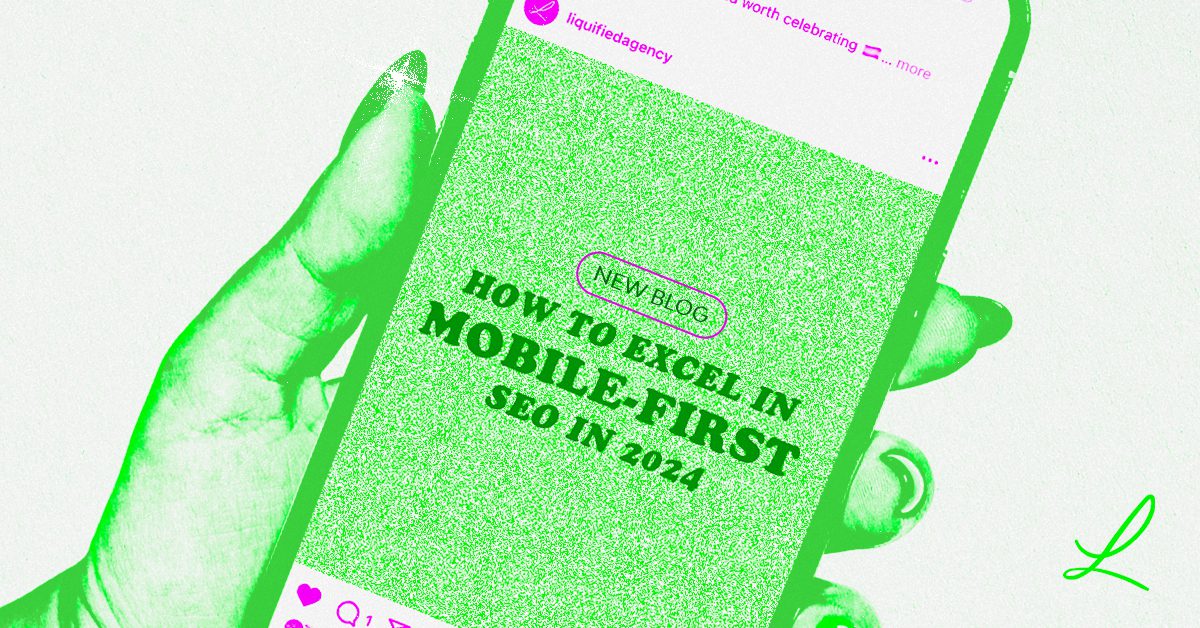News

How to Excel in Mobile-First SEO in 2024: Drive Traffic and Improve User Experience
Take a second to think about how you’re reading this right now. The odds are that you’re on a mobile device. And guess what? You’re not alone. Over half of all web searches are happening on mobile phones today, and that number isn’t going down anytime soon.
If your website isn’t optimized for mobile in 2024, you’re missing out on more than just traffic – you’re losing clients, customers – and for our non-profit friends out there, you’re losing donors too! Mobile-first SEO isn’t just a nice to have, it’s an absolute must nowadays. If your site doesn’t deliver a smooth, fast, and enjoyable experience on mobile, users (and Google) will look in the other direction.
So, how can you stay competitive and make sure your site is ready for mobile visitors?
Let’s break it down.
Why Mobile-First SEO is a Game-Changer
Mobile is Where the Action Is
Over 50% of all searches come from mobile devices. Whether people are searching for a restaurant, shopping online, or checking reviews, they’re primarily doing so from their phones or tablets. And with Google’s mobile-first indexing, your mobile site, not the desktop version, is getting priority in search results.
If your site isn’t mobile-optimized, you’re risking lower rankings, which means less people are going to see it. Plain and simple.
The User Experience Factor
Mobile users are picky. They want fast load times, clean designs, and easy navigation. A bad mobile experience can easily frustrate users, causing them to leave and turn to your competition. Prioritizing mobile optimization helps keep visitors on your site longer, increases engagement, and boosts the chances of turning them into paying customers, new clients, or even lifelong donors.
Google Loves Mobile-Friendly Sites
Google rewards websites that offer smooth mobile experiences. That means faster loading times, easy-to-use navigation, and responsive design can help you climb higher search rankings. Bottom line? If your site looks great and performs well on mobile, Google will notice, and so will your customers.
How to Nail Mobile-First SEO in 2024
Responsive Design is Non-Negotiable
Let’s start with the basics. Responsive design means your website adjusts automatically to different screen sizes, whether it’s a smartphone, tablet, or desktop. Your site should look sharp and function perfectly across all devices. Without this, you’re setting yourself up for higher bounce rates and lower user engagement.
Speed is Key
We live in a world of instant gratification that goes double for mobile users. If your site doesn’t load quickly, they’ll move on.
Here’s how you can make sure your site loads at lightning speed:
- Compress images to reduce load times without losing quality.
- Minimize unnecessary code like render-blocking JavaScript.
- Use browser caching so repeat visitors don’t have to reload everything.
- Consider a CDN (Content Delivery Network) to serve content faster to users across different locations.
- Make sure your hosting provider isn’t slowing you down either.
Make Your Content Mobile-Friendly
Mobile users don’t have time to sift through endless blocks of text. Keep your content short, sweet, and skimmable. Use bullet points, shorter paragraphs, and subheadings to break things up for users. And don’t forget about touch-friendly elements. Make sure elements like buttons and links are large enough to be easily seen and tapped.
Optimize for Voice Search
With more people using voice search, mobile SEO also means adapting to natural, conversational search queries. Consider what your audience asks Siri or Google Assistant, and structure your content to answer those questions. Remember, incorporating keywords and common questions your audience might ask will also help boost your ranking for voice searches.
Leverage Accelerated Mobile Pages (AMP)
Have you ever heard of AMP? It’s a technology designed to load mobile pages faster by stripping unnecessary code. Implementing AMP can boost the load times on your website, leading to an increase in your rating and a positive user experience.
Don’t Forget About Local SEO
Mobile users frequently search for local businesses. By prioritizing local SEO, you can draw in users who are actively looking for your services at that moment. It’s important to keep your Google My Business listing current and ensure that your name, address, and phone number are up to date and consistent across all platforms. Doing this ensures your website ranks high amongst other local businesses, increasing visibility.
Wrapping It Up
As we move deeper into 2024, the mobile-first world is still going strong, which means your SEO strategy should be too. Mobile optimization is more than just a technical tweak, it’s a mindset shift. It’s about anticipating the needs of your mobile users and giving them a seamless experience every time they visit your site.
If you haven’t already, it’s time to prioritize mobile-first SEO. Start by implementing responsive design, speeding up your load times, and fine-tuning your mobile content. Small changes can improve how users interact with your site and how Google ranks you.
In the end, mobile-first SEO is all about meeting your audience where they are on their phones and ensuring your brand is right there when they need you most. The future of search is mobile, and with the right strategy, your website will be, too!